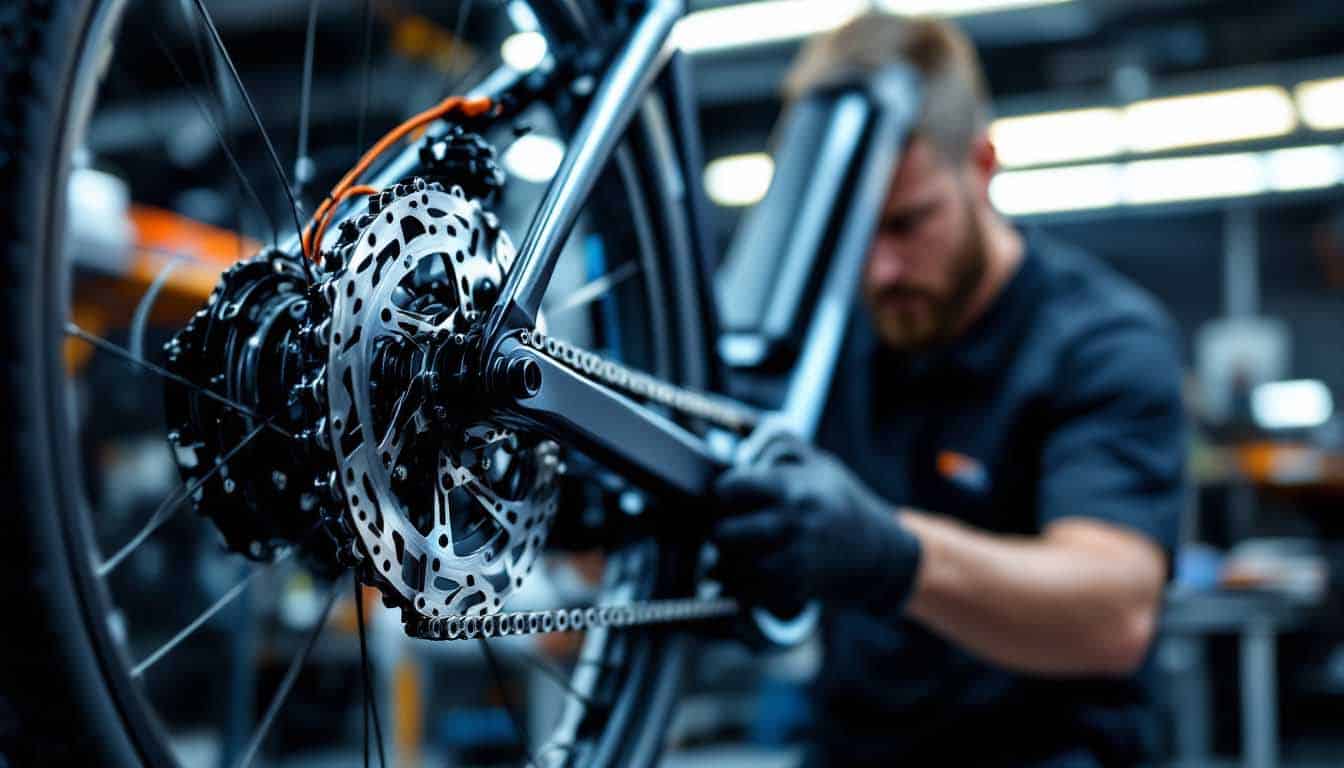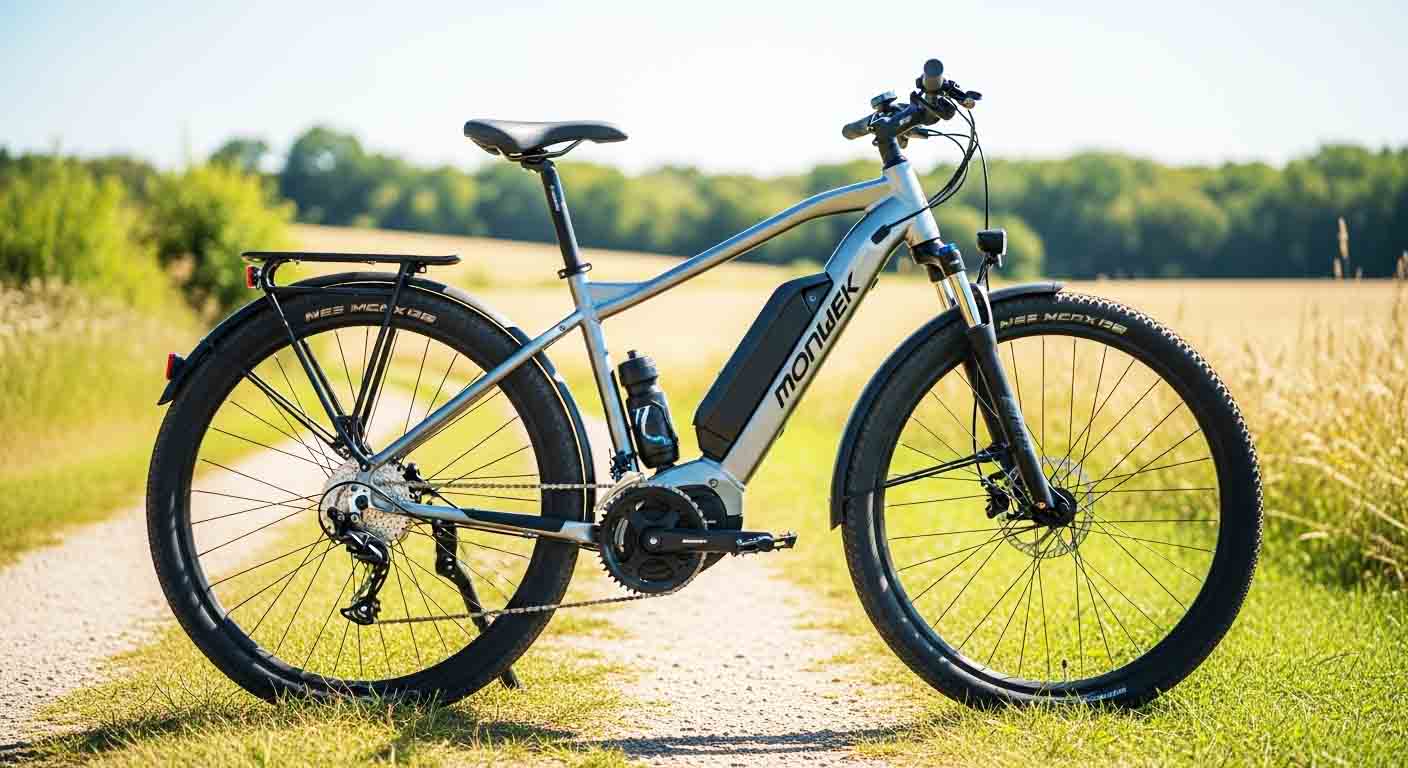Autonomy, Power & Battery: How to Understand E-Bike Specs Without Going Crazy
Autonomy, Power & Battery: How to Understand E-Bike Specs Without Going Crazy
If you’re shopping for your first electric bike, the technical jargon can feel overwhelming. What does 250W really mean? How far is 50 km on a single charge? Do you need a 36V or 48V battery? Don’t worry — in this guide, we’ll break down the most common e-bike specs in simple terms so you can choose the right model with confidence.
🔋 Battery: The Heart of Your E-Bike
The battery is one of the most important (and expensive) components of an electric bike. Here’s what to focus on:
- Voltage (V): Most e-bikes come with a 36V or 48V battery. In general, a higher voltage means more power and speed.
- Amp-hours (Ah): This tells you how much energy your battery can store. More amp-hours = longer ride.
- Watt-hours (Wh): This is the real number to watch. It’s calculated by multiplying volts × amp-hours. For example, a 36V 10Ah battery = 360Wh. The higher the Wh, the longer your range.
Tip: If range is your priority, focus on watt-hours. A 500Wh battery usually gives you around 50–80 km per charge, depending on how you ride.
⚡ Power: What 250W or 750W Really Means
E-bikes are usually rated by motor power in watts (W):
- 250W: Common in Europe. Great for city commuting and light hills.
- 500W: A good balance of speed and climbing ability.
- 750W–1000W: More power for off-road or hilly terrain. These motors accelerate faster and carry more weight but can drain your battery quicker.
Reminder: More power doesn’t always mean better. If you only ride on flat city roads, a 250W–500W motor is more than enough.
🛣️ Range: How Far Can You Go?
Manufacturers often advertise ideal conditions. In reality, your range depends on:
- Rider weight
- Terrain (flat or hilly)
- Pedal-assist level
- Wind and temperature
If an e-bike says it has a 100 km range, expect around 60–80 km in real conditions. Using lower assist levels can extend your battery life significantly.
⚙️ Other Key Specs to Watch
- Charging time: Most e-bike batteries take 4–6 hours to fully charge.
- Removable batteries: Easier to charge and replace.
- Battery lifespan: A good battery lasts about 500–1000 charge cycles before its capacity starts to drop.
🚴♂️ Final Thoughts: Choose Smart, Not Just Big Numbers
Specs are important, but context is everything. A 1000W motor sounds great — but do you need that much power for city errands? Likewise, a massive 720Wh battery is nice — but it adds weight and cost.
Know your needs:
- City commuting? Go for light, efficient models (250–500W, 360–500Wh).
- Mountain trails or long rides? Look for more torque and range (500–750W, 500–700Wh).
- Folding e-bike for travel? Prioritize weight and portability over power.
📌 Conclusion
You don’t need to be an engineer to understand e-bike specs. Focus on watt-hours for range, watts for power, and voltage for performance. With a little knowledge, you’ll find the perfect e-bike that fits your lifestyle — and your budget.
RELATED POSTS
Wittkop Bike Seat I Bicyc...
$39.49 (as of October 13, 2025 03:34 GMT +00:00 - More infoAs a site dedicated to cycling innovation, gear reviews, and next-generation bike technology, we sometimes recommend products and accessories that can enhance your riding experience. When you purchase through our affiliate links, we may earn a small commission at no extra cost to you. This support helps us continue creating valuable content, guides, and reviews for the biking community.
Please note: Product prices and availability are accurate as of the date/time indicated and are subject to change. Any price and availability information displayed on Amazon.com at the time of purchase will apply to your order.
We only recommend products we believe bring real value to cyclists who are passionate about performance, safety, and the future of biking technology.
)Boao Universal Bicycle Tr...
$9.99 (as of October 13, 2025 03:34 GMT +00:00 - More infoAs a site dedicated to cycling innovation, gear reviews, and next-generation bike technology, we sometimes recommend products and accessories that can enhance your riding experience. When you purchase through our affiliate links, we may earn a small commission at no extra cost to you. This support helps us continue creating valuable content, guides, and reviews for the biking community.
Please note: Product prices and availability are accurate as of the date/time indicated and are subject to change. Any price and availability information displayed on Amazon.com at the time of purchase will apply to your order.
We only recommend products we believe bring real value to cyclists who are passionate about performance, safety, and the future of biking technology.
)Giro Fixture MIPS II Road...
$84.95 (as of October 13, 2025 03:34 GMT +00:00 - More infoAs a site dedicated to cycling innovation, gear reviews, and next-generation bike technology, we sometimes recommend products and accessories that can enhance your riding experience. When you purchase through our affiliate links, we may earn a small commission at no extra cost to you. This support helps us continue creating valuable content, guides, and reviews for the biking community.
Please note: Product prices and availability are accurate as of the date/time indicated and are subject to change. Any price and availability information displayed on Amazon.com at the time of purchase will apply to your order.
We only recommend products we believe bring real value to cyclists who are passionate about performance, safety, and the future of biking technology.
)Bike Handlebar Bag, Waterproof Bicy...
$16.99 (as of October 10, 2025 03:29 GMT +00:00 - More infoAs a site dedicated to cycling innovation, gear reviews, and next-generation bike technology, we sometimes recommend products and accessories that can enhance your riding experience. When you purchase through our affiliate links, we may earn a small commission at no extra cost to you. This support helps us continue creating valuable content, guides, and reviews for the biking community.
Please note: Product prices and availability are accurate as of the date/time indicated and are subject to change. Any price and availability information displayed on Amazon.com at the time of purchase will apply to your order.
We only recommend products we believe bring real value to cyclists who are passionate about performance, safety, and the future of biking technology.
)CAMPSNAIL Workout Biker Shorts Wome...
$7.99 (as of October 13, 2025 03:34 GMT +00:00 - More infoAs a site dedicated to cycling innovation, gear reviews, and next-generation bike technology, we sometimes recommend products and accessories that can enhance your riding experience. When you purchase through our affiliate links, we may earn a small commission at no extra cost to you. This support helps us continue creating valuable content, guides, and reviews for the biking community.
Please note: Product prices and availability are accurate as of the date/time indicated and are subject to change. Any price and availability information displayed on Amazon.com at the time of purchase will apply to your order.
We only recommend products we believe bring real value to cyclists who are passionate about performance, safety, and the future of biking technology.
)Lumiere & Co. Bike Handlebar Bag - ...
$23.87 (as of October 10, 2025 03:29 GMT +00:00 - More infoAs a site dedicated to cycling innovation, gear reviews, and next-generation bike technology, we sometimes recommend products and accessories that can enhance your riding experience. When you purchase through our affiliate links, we may earn a small commission at no extra cost to you. This support helps us continue creating valuable content, guides, and reviews for the biking community.
Please note: Product prices and availability are accurate as of the date/time indicated and are subject to change. Any price and availability information displayed on Amazon.com at the time of purchase will apply to your order.
We only recommend products we believe bring real value to cyclists who are passionate about performance, safety, and the future of biking technology.
)Zacro Bike Seat Cushion -...
$18.99 (as of October 13, 2025 03:34 GMT +00:00 - More infoAs a site dedicated to cycling innovation, gear reviews, and next-generation bike technology, we sometimes recommend products and accessories that can enhance your riding experience. When you purchase through our affiliate links, we may earn a small commission at no extra cost to you. This support helps us continue creating valuable content, guides, and reviews for the biking community.
Please note: Product prices and availability are accurate as of the date/time indicated and are subject to change. Any price and availability information displayed on Amazon.com at the time of purchase will apply to your order.
We only recommend products we believe bring real value to cyclists who are passionate about performance, safety, and the future of biking technology.
)SMITH Signal Cycling Helm...
$51.00 (as of October 13, 2025 03:34 GMT +00:00 - More infoAs a site dedicated to cycling innovation, gear reviews, and next-generation bike technology, we sometimes recommend products and accessories that can enhance your riding experience. When you purchase through our affiliate links, we may earn a small commission at no extra cost to you. This support helps us continue creating valuable content, guides, and reviews for the biking community.
Please note: Product prices and availability are accurate as of the date/time indicated and are subject to change. Any price and availability information displayed on Amazon.com at the time of purchase will apply to your order.
We only recommend products we believe bring real value to cyclists who are passionate about performance, safety, and the future of biking technology.
)Thousand Heritage 2.0 Adu...
$99.00 (as of October 13, 2025 03:34 GMT +00:00 - More infoAs a site dedicated to cycling innovation, gear reviews, and next-generation bike technology, we sometimes recommend products and accessories that can enhance your riding experience. When you purchase through our affiliate links, we may earn a small commission at no extra cost to you. This support helps us continue creating valuable content, guides, and reviews for the biking community.
Please note: Product prices and availability are accurate as of the date/time indicated and are subject to change. Any price and availability information displayed on Amazon.com at the time of purchase will apply to your order.
We only recommend products we believe bring real value to cyclists who are passionate about performance, safety, and the future of biking technology.
)














